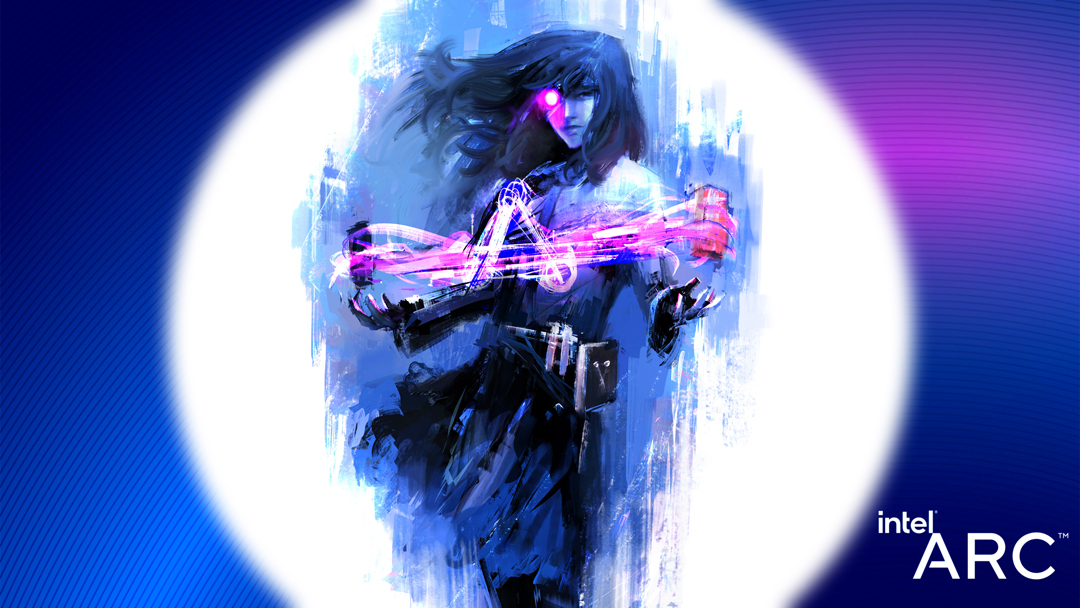Intel Arc GPUs kick off with the Alchemist, which we’ve just caught a glimpse of
Check out the high-res render of the Alchemist, the brand behind Intel’s first gaming GPU

Intel has been talking more about its incoming high-end gaming graphics cards, and revealing more about the branding – and thinking – behind them, the first generation of which will be Intel Arc Alchemist, with the chip giant sharing some renderings showing off this character.
As we’ve already seen, the naming convention Intel is running with for its HPG (high-performance gaming) graphics cards is RPG character classes going alphabetically. The first one is Alchemist, with Hot Hardware sharing a high-res artist rendering of this character (and a couple of wallpapers courtesy of managing editor Marco Chiappetta).
- Check out all the best PC games
- We'll show you how to build a PC
- These are the best processors of 2021
Check it out above, but in our opinion, it has to be said that the artwork for the Alchemist looks pretty cool. Following the Alchemist, which was codenamed DG2 previously, we’ll have what’ll effectively be DG3, DG4 and DG5, which will be Battlemage, Celestial and Druid respectively.
That’s as far as Intel has got with its initial discrete GPU roadmap thus far, but that should take us out to late in the 2020s (depending on exact release cadence), bearing in mind that Alchemist is set to debut in Q1 of 2022 (with CES seeming a good bet as the right place to make a splash, as the rumor mill has already theorized).
What’s also interesting here is that during an interview with a couple of Intel execs Hot Hardware just held, during a question about Intel’s overall goal with these new GPUs, hints were dropped about value being an important point – perhaps suggesting what we’ve hoped for all along. Namely that Intel will attempt to make serious inroads into the Nvidia and AMD dominated (but mostly the former) desktop graphics market by leveraging competitive pricing.
Analysis: Intel set to transform the GPU market? Let’s hope so
We really like Intel’s naming scheme for the Arc GPUs. It’s clever to tie the cards in with role-playing character classes, as this makes the products feel more relevant to gamers as opposed to, say, references to heavyweight scientists.
If we’re being picky, Battlemage and Celestial (particularly the latter) are a little bit of a fudge, and B and C should strictly speaking have been Bard and Cleric, going by the more common class stereotypes: but that wouldn’t have worked as they obviously don’t sound nearly dynamic enough (Bard might’ve worked for a sound card range, once upon a time). At least Intel can go for the old Enchanter to follow Druid.
Sign up for breaking news, reviews, opinion, top tech deals, and more.
The fact that Intel is laying out four generations of GPUs right off the bat is a clear statement of intent that Team Blue is in this for the long haul – and ready to have a proper go at taking on the dominant GPU powers.
That said, it is just a signal at this point, and of course, Intel is going to want to make serious noises to build hype and make folks sit up and take notice. What the company has to do is follow this up, and hopefully, if Intel attacks on the value proposition front as hinted at above, that could really grab the attention of gamers.
In a world which has increasingly spiraling out of control GPU prices, assuming Intel does take a competitive approach with pricing, that’ll be a huge benefit to the overall graphics card arena.
Affordable and available – stock’s another issue, of course – graphics cards, now that’d be quite something, eh? Here’s hoping Intel really can conjure up some GPU magic to make 2022 a much-improved year for gamers hunting out a new graphics card.
- These are the best graphics cards
Darren is a freelancer writing news and features for TechRadar (and occasionally T3) across a broad range of computing topics including CPUs, GPUs, various other hardware, VPNs, antivirus and more. He has written about tech for the best part of three decades, and writes books in his spare time (his debut novel - 'I Know What You Did Last Supper' - was published by Hachette UK in 2013).